A Personal Perspective
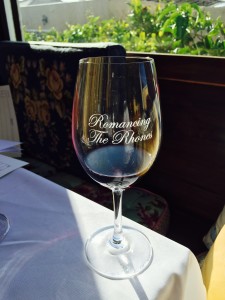 For the third Rhône Shootout, a competition organized by Affairs of the Vine, last fall we tasted 247 wines made from Rhône varieties, that is, varieties that hail from the banks of the Rhône River as it flows from Switzerland through southern France to the Mediterranean. Syrah dominates the northern Rhône, while the southern Rhône reds are blends of several varieties (most notably Grenache, Mourvedre, Carignane, Cinsault, Counoise etc.). These varieties have been successfully transplanted all over the world.
For the third Rhône Shootout, a competition organized by Affairs of the Vine, last fall we tasted 247 wines made from Rhône varieties, that is, varieties that hail from the banks of the Rhône River as it flows from Switzerland through southern France to the Mediterranean. Syrah dominates the northern Rhône, while the southern Rhône reds are blends of several varieties (most notably Grenache, Mourvedre, Carignane, Cinsault, Counoise etc.). These varieties have been successfully transplanted all over the world.
Most of the wines we tasted were from California and Oregon, though there were among them wines from Washington, Texas, Michigan, Chile, Australia and France. Just 32 wines were tasted at a time, to keep palate fatigue from distorting our perception. Each wine was tasted on two separate occasions, and the wines were tasted blind without regard to price, vintage or appellation. I only had a chance to taste about 90 of these wines, the vast majority from California
Barbara Drady, of Affairs of the Vine, requires the judges to make extensive notes, and breaks down the judges’ scores by gender. What this has shown me is that while men and women may perceive scents and flavors differently (their descriptions tended to adhere to gender lines), they gave the wines similar scores.
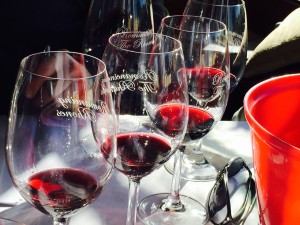
To focus on California, which fielded the majority of wine for these tastings, less than half of the twenty-four varieties grown in the Rhône are grown in the state. Of those, there has been a significant change in the last 20 years. In 1995 the most significant Rhône varieties were Grenache and Carignane, most of which was grown in the Central Valley and used for jug wine. In the intervening decades Grenache has decreased from 12,688 to 5,936 acres, and Carignane from 9,147 to 2,634 acres. At the same time Syrah has nearly doubled to 19,000 acres, and Petite Sirah has more than tripled from 2,500 to 9,600 acres. All of these pale in comparison to Cabernet Sauvignon’s 81,000 acres, but they still provide a welcome relief from the over-saturated Cabernet market.
The Rhône Shootout included white varietals and blends, as well as rosé. Here I’ve focused solely on my favorite reds.
RED BLENDS
As a general note, the blends all showed restraint with oak. The fruit and minerality really shined through. Incidentally, the term “minerality” has been up for debate lately. For my purposes, I’ll ask you to imagine the subtle background you find in mineral water, coupled with crisp acidity.
Scheid, 2011 Monterey, Triple Layer Red:
This wine is very hard to describe, but very intriguing. It offers up notes of strawberry jam, peppermint, pepper, and a candied fruit character, though it’s dry on the palate with soft tannins and perfect balance. My power of description doesn’t do it justice. 300 cases, $28. 94 points
 Davis Family Vineyards, 2012 Russian River Valley, Throne:
Davis Family Vineyards, 2012 Russian River Valley, Throne:
An architectural wine, properly proportioned, with a black cherry aroma and flavor, soft tannins, medium body, round but with firm structure. On the palate it shows minerality and restraint. A blend of 53% Grenache, 35% Syrah, 12% Mourvedre. 420 cases, $38. 92 points
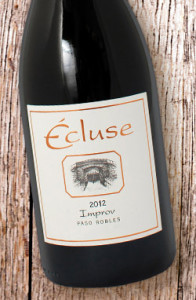 Ecluse, 2012 Paso Robles, Improv:
Ecluse, 2012 Paso Robles, Improv:
Note that I tasted both the Ecluse Improve and Rendition (see below) twice, and their positions were reversed. They also impressed at the Cabernet Shootout. The Improv is a blend of 27% Zinfandel, 27% Petite Sirah, 20% Mourvedre, 20% Merlot, 6% Grenache.
Juicy, aromatic strawberry, black cherry, vanilla and orange peel, with integrated tannins, and subtle oak notes. It’s light and vibrant on the palate with layered black fruit and strawberries on the palate. Add a little fennel on the finish. 375 cases, $38. 92 points
Chesebro, 2009 CM Ranch, Carmel Valley, La Montagna Sauvage:
Deep black cherry with black pepper accents, a bit of earthiness in the background, moderate tannin with a bitter edge that detracts from the finish It will only get better as the tannins resolve. A blend of 82% Syrah, 15% Grenache, 3% Mourvedre. 185 cases, $21. 91 points
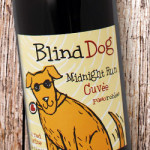
Blind Dog, non-vintage Paso Robles, Midnight Run Cuvee:
Blind Dog is Ecluse’s second label, and it’s a wonderful bargain. Strawberry and rhubarb pie aroma, supple tannins, vibrant minerality, slightly bitter finish with a complex fruit finish. 1,100 cases, $15. 90 points
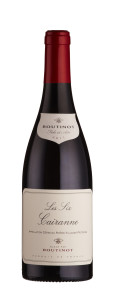
Boutinot Fide et Arte, 2011 Côtes du Rhône Villages, Les Six Cairanne:
A blend of six varieties (Grenache Noir, Syrah, Mourvèdre, Carignan Noir, Cinsault and Counoise) grown above the village of Cairanne.
fresh cherry-plum character, bright and juicy, with firm structure, fine balance and a mineral finish. 14.5% alcohol, 2,000 cases, $25. 90 points
Cline Cellars, 2012 California, Cashmere:
This blend of 35% Mourvedre, 24% Syrah, 23% Grenache and 18% Petite Sirah, Cashmere has an unusual cherry and peach nose and flavor, bright, round, and dry, with firm structure and everything in balance. Widely available and dirt-cheap. 47,300 cases, $16. 90 points.
Ecluse, 2012 Paso Robles, Rendition:
A blend of 40% Grenache, 30% Syrah, 30% Mourvedre, Rendition serves up strawberry-plum fruit, modest tannin, classic structure, well-balanced, mineral and spice finish. This will age very well. 250 cases, $38. 90 points
Sol Rouge, 2011 Lake County, Gypsy Rouge:
Licorice and blackberry, medium body, firm structure, modest tannin, excellent balance, spicy finish. It’s supremely well constructed, everything in proportion. 350 cases, $28. 90 points
RED VARIETALS:
Pendleton Estate Winery, 2012 Alexander Valley, Mourvedre:
A muddle of mouthwatering black fruit with black cherry and blackberry jam dominating, bright, smooth and long. It tastes balanced, but be aware it has a listed alcohol of 14.7% . 95 cases, $32. 92 points
Imagine, 2007 Santa Barbara County, “Winged” Paradise Mountain, Syrah:
Aged 6 years in 75% French and 25% Hungarian oak. Cherry, mushroom and roasted meat nose, lush cherry on the palate, fully integrated tannin, firm acidity, perfect balance and good length. 246 cases, $80. 92 points
Lucas & Lewellen, 2011 estate vineyards, Santa Barbara County, Syrah:
Co-fermented with 4% Viognier, like a Côte-Rôtie. Bing cherry nose, bright and inviting, a touch of honeysuckle, dry, layered and complex, with a long cherry/orange peel finish. 411 cases, $26. 91 points
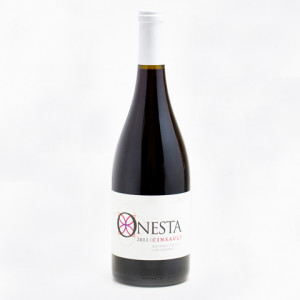 Onesta, 2011 Bechthold Vineyard, Lodi, Cinsault:
Onesta, 2011 Bechthold Vineyard, Lodi, Cinsault:
Blackberries with an unusual hint of cashews , smooth tannin, classic structure, full black stone fruit flavors, long finish. 400 cases, $29. 91 points
En Garde, 2012 Livermore Valley, Ghielmeti Vineyard Petite Sirah:
Inky purple, plumy nose, tart, tight but with supple tannins, layered plum, blueberry and cherry fruit with a hint of leather and light spice. Great structure. 90 cases, $38. 90 points.
